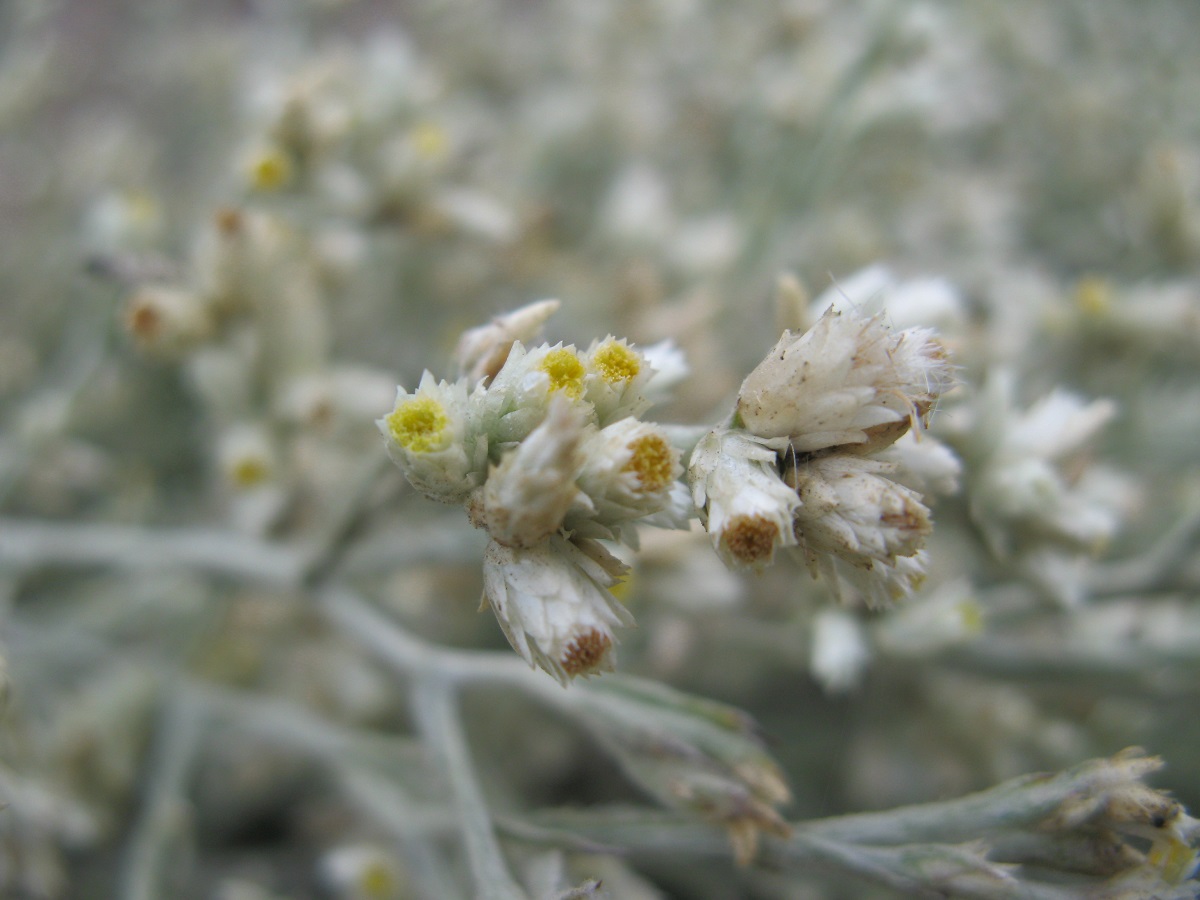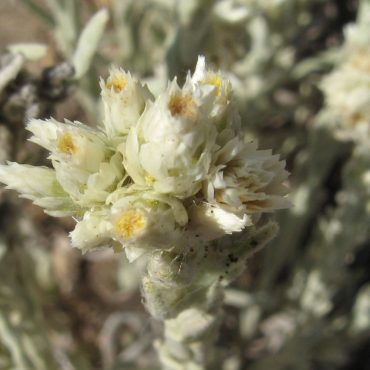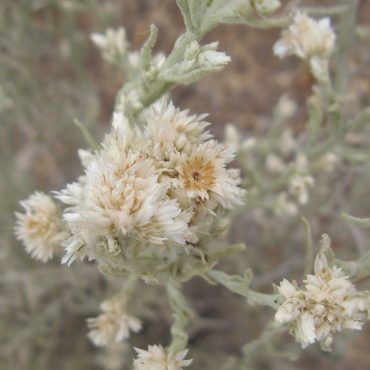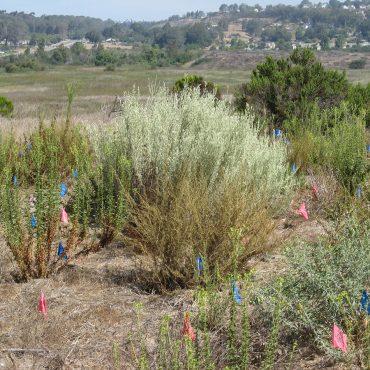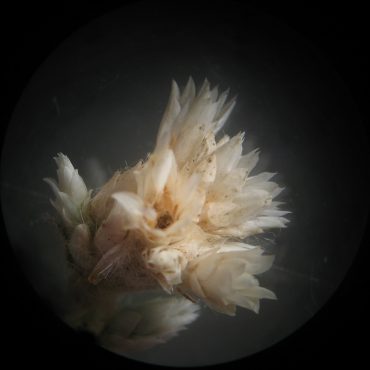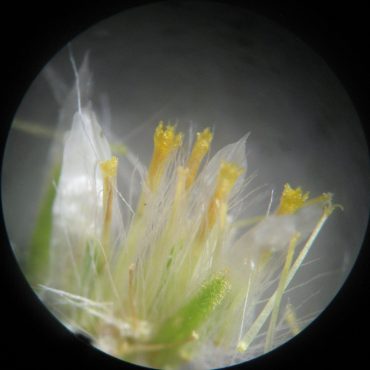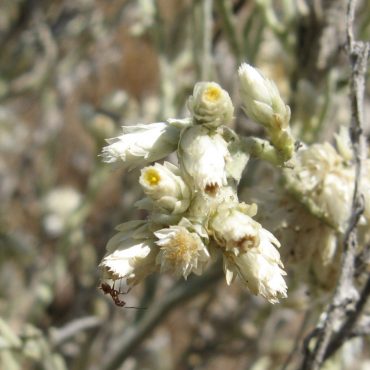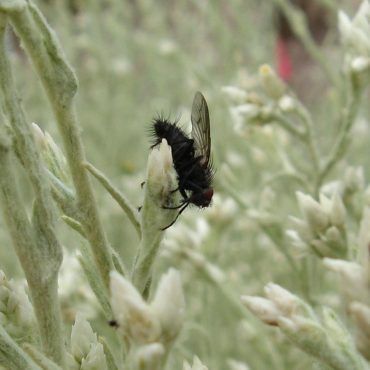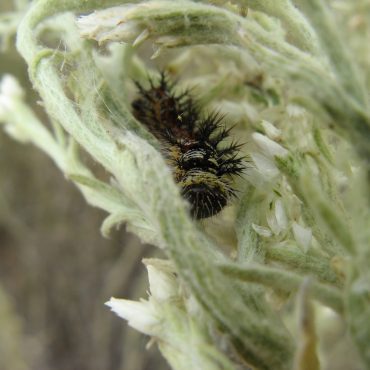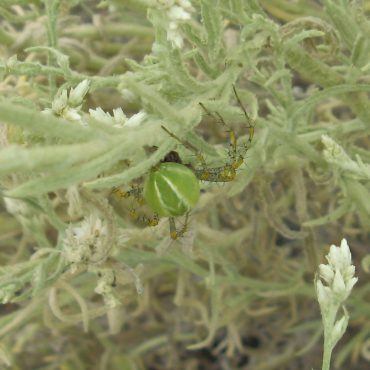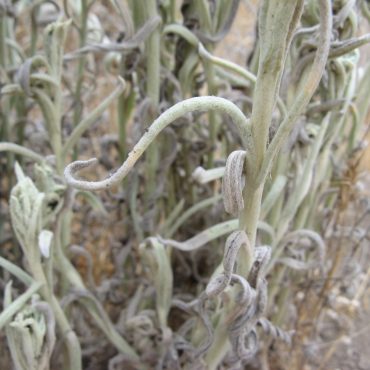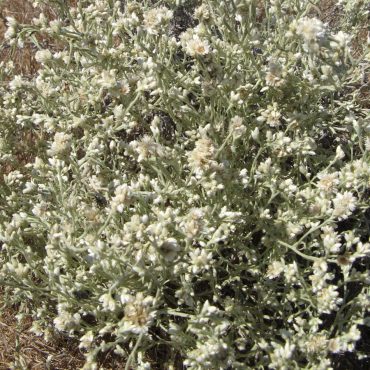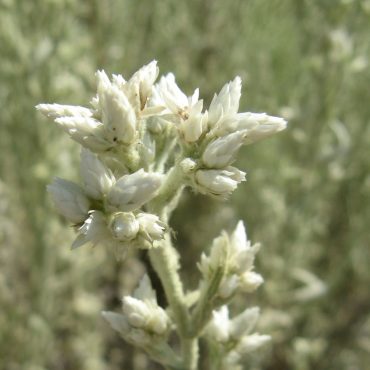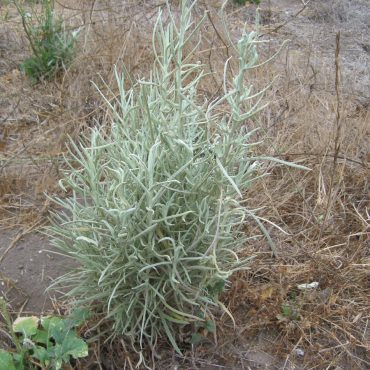Classification
Fragrant everlasting is a dicot angiosperm in the sunflower family, the Asteraceae.2,11 This is one of the two largest families of vascular plants in the world, second only to the orchid family (Orchidaceae).44,143 “Flowers” of the sunflower family are made up of one or both of two types of flowers, called florets: symmetrical disk florets and strapped-shaped ray florets. These are crowded onto a common base (receptacle), which is surrounded by specialized leaves, phyllaries, The whole is called a flower head, which is often assumed to be a single flower.11,44,49 Although a few plants in this family, such as lettuce and artichokes, are used as food plants, their main economic value is in their use as ornamentals: sunflowers, daisies, zinnias, marigolds, chrysanthemums, and many more.143 On the other hand, many plants in this family are serious agricultural pests.41
Asteraceae that occur in the Reserve include Bush Sunflower (Encelia californica), Goldenbush (Isocoma menziesii), and Coyote Brush (Baccharis pilularis).
Plants of the sunflower family are divided into tribes on the basis of flower and fruit morphology.11,310 The everlasting tribe is one of the more easily recognized; it is distinguished by the lack of ray florets and by the papery phyllaries that surround and largely conceal the disk florets.
There are six native species of everlasting (Pseudognaphalium) reported in the Reserve.48 They are distinguished from one another by the presence and distribution of glands and hairs on the plant, by characteristics of the leaf base and by their scent. California Everlasting (P. californicum) and Bicolor Everlasting (P. bioletti) are the most commonly identified.
Jepson eFlora Taxon Page

